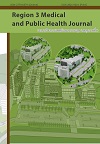Orthodontic Treatment in Patient with Bilaterally Missing Maxillary Canines
Keywords:
Orthodontic treatment, Missing maxillary canines, Substituting maxillary first premolarsAbstract
Congenital absence of permanent maxillary canines is a rare condition. Both genetic and environmental factors can cause the failure of tooth development. Maxillary canines play an important role in creating a smile and good facial esthetics. Moreover, they support the dentition during lateral movement creating occlusal stability. This case report presented a 22 years old Thai female patient with an upper anterior spacing of the teeth. Oral examination and radiographic findings revealed the missing maxillary canines bilaterally. The patient was diagnosed with skeletal Class II malocclusion. This case report described the orthodontic treatment by substituting maxillary first premolars for missing maxillary canines to eliminate space. After the treatment, a stable occlusion with a satisfactory facial profile and functional excursion without interference was achieved. These results indicated that substituting the maxillary first premolars for the maxillary canines is an effective option in treating patients with missing maxillary canines.
Keywords: Orthodontic treatment, Missing maxillary canines, Substituting maxillary first premolars
References
เอกสารอ้างอิง
Polder BJ, Van’t Hof MA, Van der Linden FP, Kuijpers-Jagtman AM. A meta-analysis of the prevalence of dental agenesis of permanent teeth. Community Dent Oral Epidemiol. 2004;32:217-26.
AlShahrani I, Ra T, Alqarni M. A Review of Hypodontia: Classification, Prevalence, Etiology, Associated Anomalies, Clinical Implications and Treatment Options. World Journal of Dentistry. 2013;4:117-25.
Larmour CJ, Mossey PA, Thind BS, Forgie AH, Stirrups DR. Hypodontia--a retrospective review of prevalence and etiology. Part I. Quintessence Int. 2005;36:263-70.
Kambalimath HV, Jain S, Patil RU, Asokan A, Kambalimath D. Permanent Maxillary Canine Agenesis: A Rare Case Report. Int J Clin Pediatr Dent. 2015;8:242-6.
Garcia R. Missing maxillary canine: from diagnosis to treatment. J Dentofacial Anom Orthod. 2010;13:55-74.
Zachrisson B. First premolars substituting for maxillary canines--esthetic, periodontal and functional considerations. World J Orthod. 2004;5:358-64.
Simms RA. Management of orthodontic treatment when first premolars are substituted for canines. Angle Orthod. 1977;47:239-48.
Becker A, Chaushu G, Chaushu S. Analysis of failure in the treatment of impacted maxillary canines. Am J Orthod Dentofacial Orthop. 2010;137:743-54.
Seager L, Shah J, Burke T, Khambay B. A study of smile aesthetic perception among dental professionals, patients and parents towards impacted maxillary canine treatment options. J Orthod. 2021;48:250-9.
Masoud AI, Bindagji FH. Orthodontic treatment of a case with a congenitally missing maxillary canine and a malformed contralateral canine. Australasian Orthodontic Journal. 2021;37:121-7.
Sumiyoshi K, Ishihara Y, Komori H, Yamashiro T, Kamioka H. Orthodontic Treatment of a Patient with Bilateral Congenitally Missing Maxillary Canines: The Effects of First Premolar Substitution on the Functional Outcome. Acta medica Okayama. 2016;70:57-62.
Johnston CD, Littlewood SJ. Retention in orthodontics. Br Dent J. 2015;218:119-22.
Downloads
Published
How to Cite
Issue
Section
License
Copyright (c) 2022 Region 3 Medical and Public Health Journal - วารสารวิชาการแพทย์และสาธารณสุข เขตสุขภาพที่ 3

This work is licensed under a Creative Commons Attribution-NonCommercial-NoDerivatives 4.0 International License.



